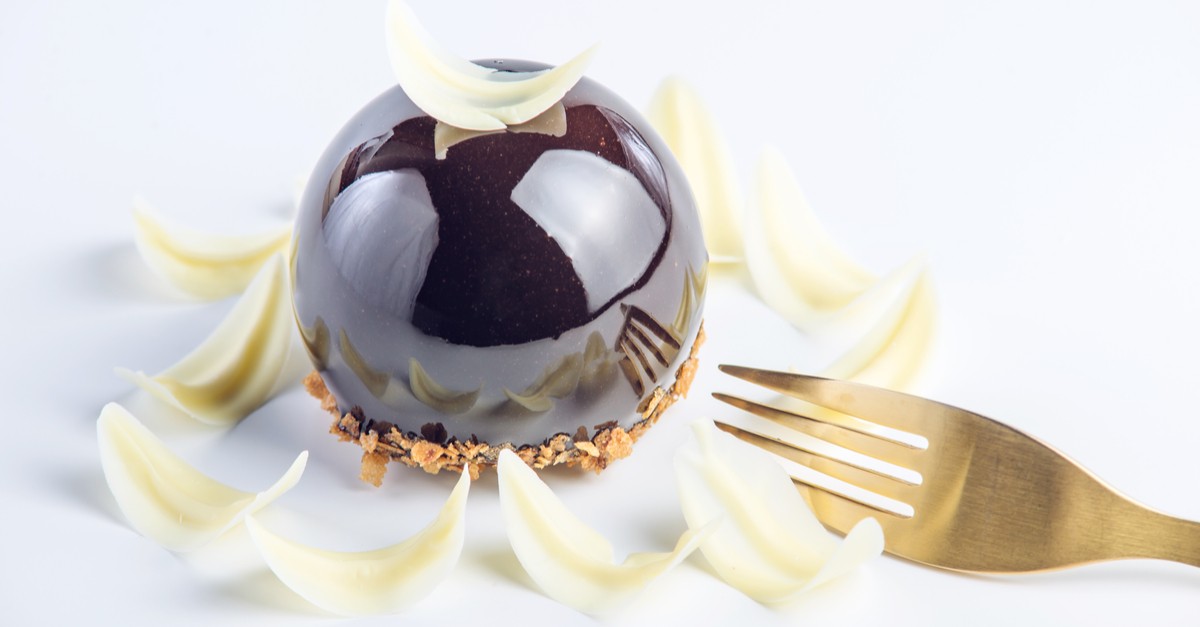The mystique of mirror glaze unveiled.
The Struggle
Mirror glaze has taken the internet by storm. You can’t scroll through you favorite foodie instagram account without coming across one video showing off a mirror glazed cake. Even I had no idea how it was made the first time I saw this technique. There is no doubt it is so mesmerizing and satisfying that it keeps us smashing the like button time and time again. And then there comes the time in our lives where we say to ourselves, “Oh, I could do that”! This happens so often they made a Netflix series about it. Unfortunately, most of the satisfying videos on the ol’ internet are done by people who are masters of their craft. Thankfully, mirror glaze is easy to make, though there is a lot to know if you are not an experienced baker/pastry chef. And there are now hundreds of mirror glaze recipes and “how to” videos on the internet. The mirror glaze video’s are all basically the same, so there is no need to beat you over the head with it. But you will need one special ingredient to help get that perfect sheen to a mirror glaze. That’s why I’m glad people commonly ask the question,
“What magical ingredient do I use to make mirror glaze?”
It’s gotta be magic, right?
To be 100% honest, mirror glaze is a rather basic technique (but one that can blow people’s minds no matter!). The recipe always consists of these basic ingredients: water, sugar/corn syrup/glucose syrup, sweetened condensed milk, white chocolate, and gelatin. The main item we will focus on here is the gelatin. Some recipes will call for powdered gelatin while others will call for sheet gelatin. We always suggest using platinum grade sheet gelatin for mirror glaze. Platinum sheet gelatin has the cleanest flavor and the highest clarity of all the types of gelatin. So for a recipe that calls for sheet gelatin, you can simply substitute the platinum gelatin in sheet for sheet. If you are substituting sheet gelatin for powdered gelatin, you will need to convert the powdered gelatin weight to sheets. The most common gelatin you find in a store has a bloom of 225 but is of silver grade (two grades lower than platinum). Platinum gelatin has a bloom of 235-265, so it is recommended to use around 93% of the weight of the powdered gelatin. The gelatin in the recipe will work with the chocolate to set the glaze on the outside of the cake.
Nailed it
Here are some tips that will help you nail a mirror glaze.
- Freeze the cakes solid. They can’t just be cold, they need to be frozen to help set the glaze.
- When cooled to 92°F the mirror glaze should be viscous but not too thick. It should be slightly thicker than heavy cream, but still completely pourable. If it is too thick, it has probably cooled too much. Good thing about mirror glaze is you can gently reheat it to 115°F and start the cooling process over.
- If the mixture is watery something has gone completely wrong. Check the recipe, your measurements, and start over.
- Start simple, the first item you should attempt to glaze is a cleanly frosted round cake. Use this to practice the technique and once you have it down then move on to a more advanced mold or shape.
- Allow the mirror glaze to set for 1 hour in the refrigerator before serving.
- Mirror glaze is very sweet (and that’s coming from someone with a major sweet tooth). Plan the recipes accordingly to prepare for the added sweetness that will come from the glaze.
Have a Question? Ask a Chef!
Modernist Pantry is here to help professional and home chefs transform food. We’re honored so many of you reach out to our test kitchen for problem solving and inspiration. Have a question? Click to Ask a Chef!



4 Comments.
I’m not sure when this article was written, but it says “The most common gelatin you find in a store has a bloom of 225 but is of silver grade (two grades lower than platinum). Platinum gelatin has a bloom of 235-265, so it is recommended to use around 93% of the weight of the powdered gelatin.”
Yes, Knox powdered gelatin is 225 bloom, but the only Platinum sheet gelatin you currently sell is PerfectaGel Platinum, which is only 230 bloom, not 235-265 (and you say it is the only Platinum available in the US).
Based on the formula in this article on ChefSteps.com, 1 gram of Knox is equivalent to 0.99 grams of PerfectaGel Platinum, almost identical.
https://www.chefsteps.com/ingredients/gelatin
OK, there are a lot of recipes on the web. But would including ONE here kill you?
Why is condensed milk used in mirror glaze?
Possibly because of its pourable viscosity